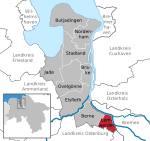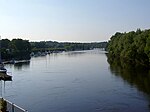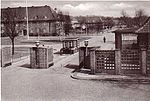Bremer Vulkan
1893 establishments in Germany1997 establishments in GermanyCompanies based in Bremen (city)Companies formerly in the MDAXDefence companies of Germany ... and 6 more
Defunct manufacturing companies of GermanyHistory of Bremen (city)Manufacturing companies based in Bremen (state)Manufacturing companies disestablished in 1997Manufacturing companies established in 1893Shipbuilding companies of Germany

Bremer Vulkan AG was a prominent German shipbuilding company located at the Weser river in Bremen-Vegesack. It was founded in 1893 and closed in 1997 because of financial problems and mismanagement. All together Bremer Vulkan built about 1100 ships—including the ships of the predecessor Johann Lange Shipyard—of different types. It is remarkable that the Bremer Vulkan, with the exception of both World Wars, only built civilian ships; production of naval ships except during wartime first started in the 1980s.
Excerpt from the Wikipedia article Bremer Vulkan (License: CC BY-SA 3.0, Authors, Images).Bremer Vulkan
Zur Westpier, Bremen Vegesack (Bremen-Nord)
Geographical coordinates (GPS) Address Nearby Places Show on map
Geographical coordinates (GPS)
| Latitude | Longitude |
|---|---|
| N 53.175277777778 ° | E 8.5983333333333 ° |
Address
Zur Westpier
28755 Bremen, Vegesack (Bremen-Nord)
Free Hanseatic City of Bremen, Germany
Open on Google Maps









